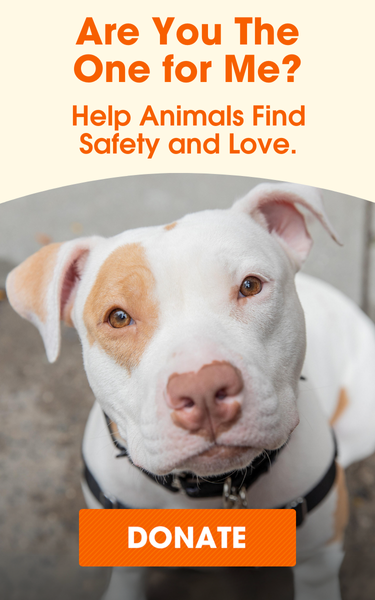
Lucy’s Journey from Abandoned to Adored

When an apartment manager in Brooklyn (we will refer to him as John in this story), entered the abandoned unit of a former tenant, he noticed one of the bedroom doors was locked.
He unlocked it and was horrified by what he saw: a one-year-old female Maltese in a very neglected state. The stuffy and hot room had no air-conditioning, and the windows were closed. Feces and urine stained the floor.
“She was very thin and severely matted like she hadn’t been groomed in a year,” says John. “It’s hard to say how long she was in there. We posted a notice on the door if the tenants were to come back, but no one ever contacted us.”
John took the dog to a local animal hospital where she was scanned for a microchip that led him to the location where she had originally been chipped. Attempts to reach the owners failed.
Refeeding and Recovery
ACC staff shaved the dog before transporting her to the ASPCA for vital medical treatment. Dr. Karla Kovach, Medical Supervisor at the ASPCA Animal Recovery Center (ARC) performed the intake exam on June 3, 2023.

“She was definitely emaciated with a poor hair coat,” Dr. Kovach says. “She had some traction alopecia where tightly matted areas pulled out her hair. But she was very sweet and allowed all handling.”
Lucy, as the seven-lb. dog was named, was fed according to a specific protocol to prevent refeeding-related illness, a potentially fatal complication that can occur if an undernourished animal is overfed after a long period of inadequate nutrition.
“The goal during refeeding is for the dog’s body to relearn how to use food,” says Dr. Kovach. “She needed to achieve a normal metabolism so food could be properly ingested and absorbed.”

Lucy’s refeeding continued over the next two weeks while she remained hospitalized, and staff continued her supportive care. Her other medical issues including skin irritation and thickening—along with the hair loss—were resolved with treatment and nutrition.
In mid-June, Lucy was transferred to the ASPCA Canine Annex for Recovery and Enrichment (CARE), the next stop on her journey to recovery. A month later, by July 21, she had nearly doubled her weight, to more than 13 lb.
Becoming the Center of Attention
John remained in touch with the ASPCA while Lucy underwent treatment. He and his partner had long talked about adopting a dog, and after John found Lucy, they decided to adopt her, making it official on July 28.

Lucy is rarely alone. John takes her to work, where she is loved by his tenants, or she stays home with his partner, who often works from home.
Lucy’s new family includes John’s parents and their dogs, Cookie and CeeCee, John’s school-age niece and nephew, and his brother and sister and their spouses. At family events, Lucy is always the center of attention, a far cry from her days of solitude.

Over the summer, Lucy racked up visits to the Jersey Shore and Chesapeake Bay, and she was a popular guest at two weddings. She is a good traveler, according to John, who notes she is housetrained and knows multiple commands.
“She picked out a $100 bed at a local pet supply store that she sleeps in nightly,” John adds. “She also loves lounging on the back deck.”
“Lucy, I’m Home!”
People and dogs seem to love Lucy everywhere she goes.
"I love Lucy, we love Lucy, everyone loves Lucy,” says John, adding that he and his partner sometimes watch the ever-popular 1950s sitcom with her. They also holler, “Lucy, I’m home,” when entering their apartment.

“Lucy is active, happy, well-behaved and a blessing to us,” he says. “We are lucky to have her and thank the ASPCA for the work they did to save her.

“She had a hard time in the beginning, but she just wants companionship and love,” he adds. “That’s what we’re here for.”
